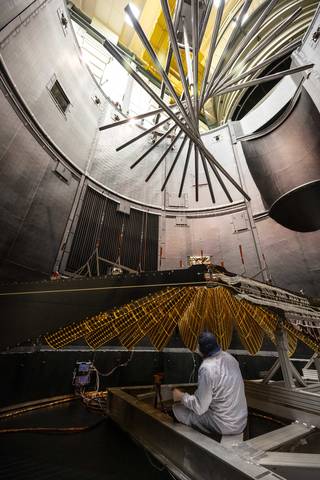Space missions often have to go where the sun don't shine. Or at least where it shines very faintly. That is particularly important if the mission draws its power from the sun. Luckily, engineers have a way of dealing with that problem - just make really really big solar panels. That is exactly what they did for Lucy, a mission to visit the Trojan asteroids around Jupiter. Those sails have now been tested on the ground, and they are magnificent.
When fully deployed, Lucy's solar panels are 7.3 meters in diameter, but only 10 cm thick. While being tested in a thermal vacuum chamber at the Lockheed Martin Space facility where the mission is being built, the test team had to build a weight offloading system to make sure the panels didn't collapse upon themselves.
NASA Video describing the Lucy mission.Credit: NASA Goddard YouTube ChannelThe panels should be able to support themselves while on the mission, and will be used to generate about 500 watts of power when out past Jupiter's orbit. This is about the equivalent power consumption of a standard washing machine.
Lucy itself will need its solar panels in order to even make it to its mission objective. Its panels will deploy about an hour after launch, and that deployment will determine the fate of the rest of the mission. "[Those] 20 minutes will determine if the rest of the 12 year mission will be a success" says Hal Levison, the Principal Investigator on Lucy at the Southwest Research Institute.
With luck and a bit more work, that deployment will go off without a hitch. So far the effort to design and test the various spacecraft subsystems are already a credit to the engineering and science team tasked with making Lucy a reality. That reality will come to light on October 16th, when the spacecraft with the spectacular solar array begins its journey to the Trojans.
Learn More:
NASA - NASA’s Lucy Stretches Its Wings in Successful Solar Panel Deployment Test
Centauri Dreams - Lucy: Solar Panel Deployment Tests a Success
SwRI - The Lucy Spacecraft and Payload
 Universe Today
Universe Today

